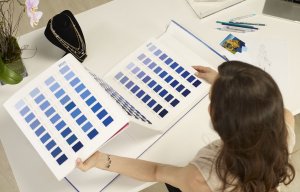
Pointcarre adds Archroma colour library
The company is offering a new software solution for digital printing called ColorSep.

20th August 2018
Innovation in Textiles
|
New York, NY
While the digital printing market is exploding, Pointcarre, a leading provider of CAD/CAM software for the apparel, textile and home furnishings industries, provides an innovative solution that automatically separates colours.
“Digital printing is needed in more and more varied sectors, from fashion to interior design, furniture, communication or the development of outlets. This growth is due to the almost infinite creative possibilities now offered by digital in the textile field,” the company reports.
“The prints are vibrant and shimmering. The colours are strong, the patterns can be ultra-sophisticated, the photos reproduced to perfection. In addition, digital technology can shorten time to market products, better manage inventory and waste, and reduce the impact on the environment.”
The company is offering a new software solution for digital printing called ColorSep. “This technological choice is the result of a year of development. As we come from weaving, we look at the printing with a new eye,” said Steve Greenberg, the Pointcarre North America President.
The company, which is celebrating its 30th anniversary this year, originally designed products for weaving. Thus, it has developed a textile design software that allows you to design different kinds of printed patterns, stripes, tiles or mesh. The fabrics are simulated on a computer using CAD software, which is both Mac and PC compatible.
Integrating several modular solutions has proved to be an indispensable tool for very big names in fashion and home, according to the manufacturer. Customers at Pointcarre include Tommy Hilfiger, Calvin Klein and Ralph Lauren, as well as Timberland, Paul Smith, Nautica, Ralph Lauren, and Martha Stewart.
In general, there are two types of printing: conventional rotary frame printing and digital printing. In both cases, the work process is complex, especially because it is necessary to separate the colours. And the more the design is rich in details, the slower the process. One of the direct consequences is that costs tend to go up as the process gets longer.
The new ColorSep software has been developed to automatically separate colours. Calculations are optimised to increase efficiency in a minimum of time and at a lower cost.
ColorSep is also a tool to help with design creation by increasing the possibilities of making colour variants. “Our job is to imagine how to simplify the work of our customers to let their inspiration express itself naturally. This requires creative solutions that are each time more innovative,” explained Greenberg.
“Digital is the printing system of the future. Its very rapid growth has already begun to change the practices of the designers in fashion and home, but also the creation itself. It is enough to see the podiums of the fashion shows as well as the shop windows, to realise that the revolution is in progress,” the company adds.
“One of the current strong trends is that of the Baroque, with an ultra-visual side and lush patterns, colourful, full of details. We can perfectly imagine that new horizons will open up and that the digital world will allow the creation of exceptional pieces. But to develop such ideas, it is still necessary to have adequate tools.”
The company believes its ColorSep is perfectly adapted to the new digital challenges. To support its customers and allow them to optimise the potential of its software, Pointcarre offers a full range of services, with assistance available in several languages, updates, training situations and a platform of interactive e-learning.

Business intelligence for the fibre, textiles and apparel industries: technologies, innovations, markets, investments, trade policy, sourcing, strategy...
Find out more